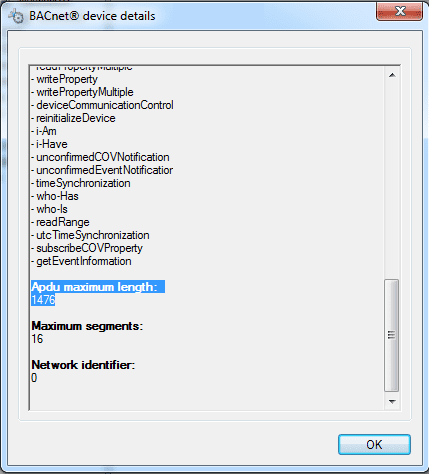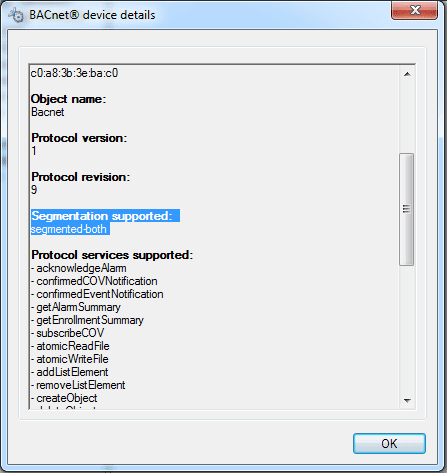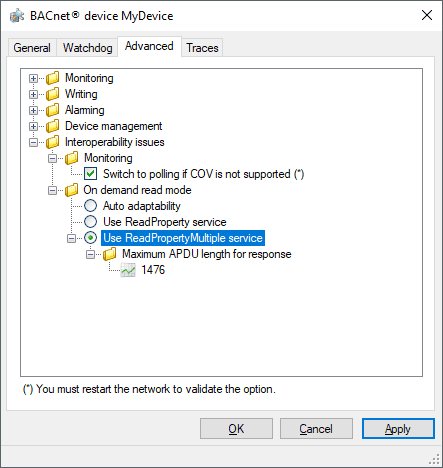| Applies to:
All PcVue version |
||
|
|
||
| Summary:
This article describes how the segmentation of BACnet messages works and how to manage it with Pcvue. |
||
|
|
||
| Details:
The segmentation is the possibility to split a big frame into several smaller frames. This segmentation is only performed on confirmed-request messages and complex-ACK messages that is to say ReadProperty services. ReadProperty services are divided in two services:
The Max APDU Length is the max size of a frame that a device could exchange. Below you can see the example of a SAIA device which can accept a frame of 1476 byte size.
Keep in mind that PcVue can exchange frames of 1476 byte size too.
Now if the device doesn’t support the segmentation, the purpose is to reduce the size of the frame.
|
||
|
|
||
|
Created on: 15 Jan 2014 Last update: 13 May 2024


